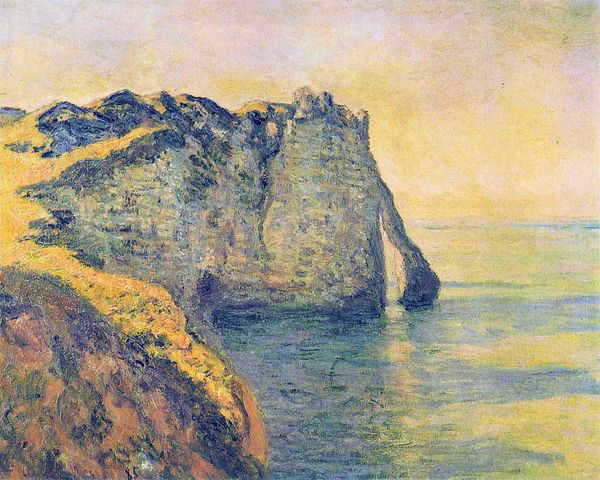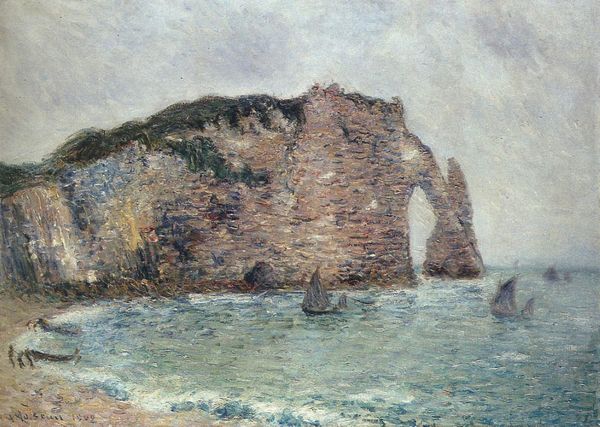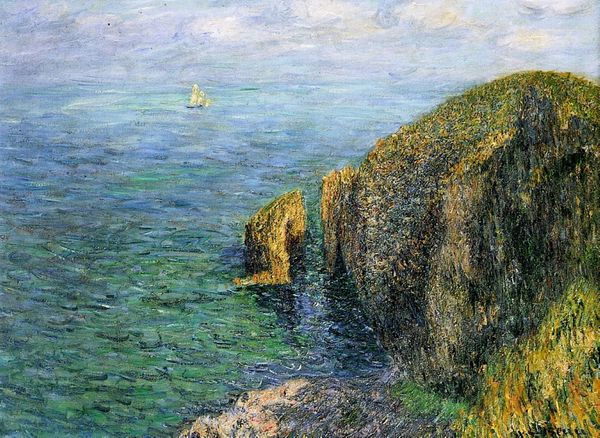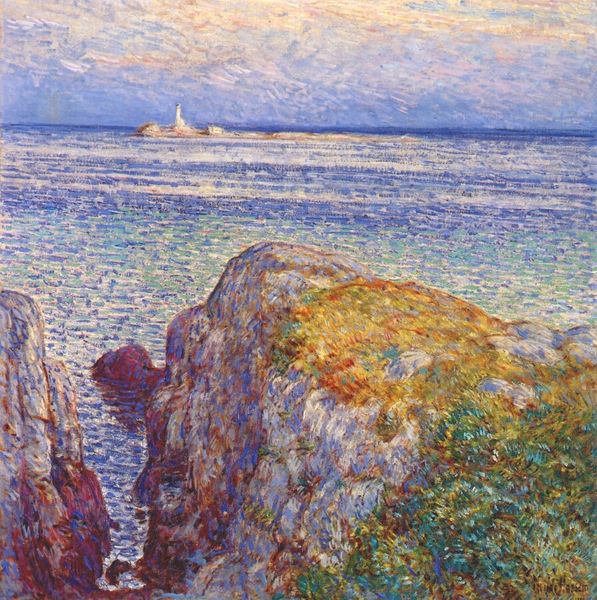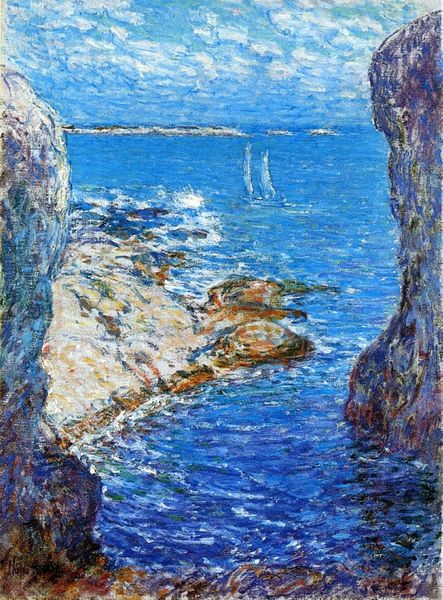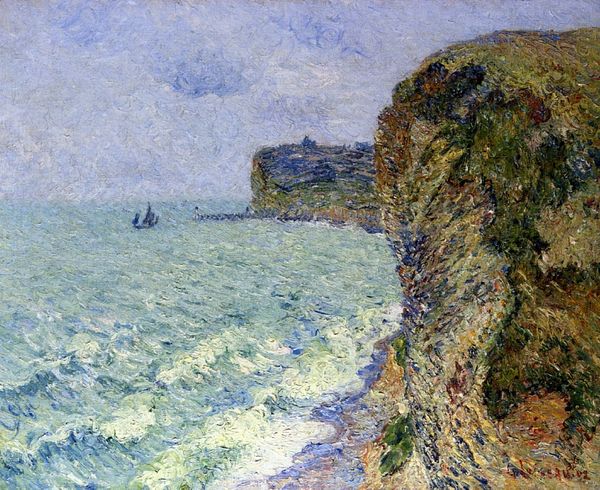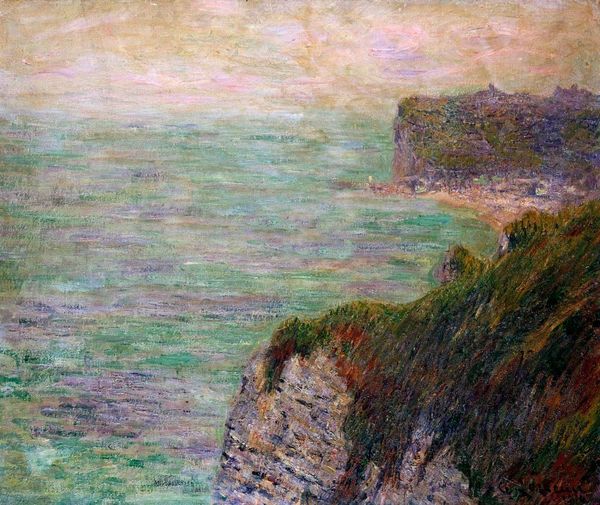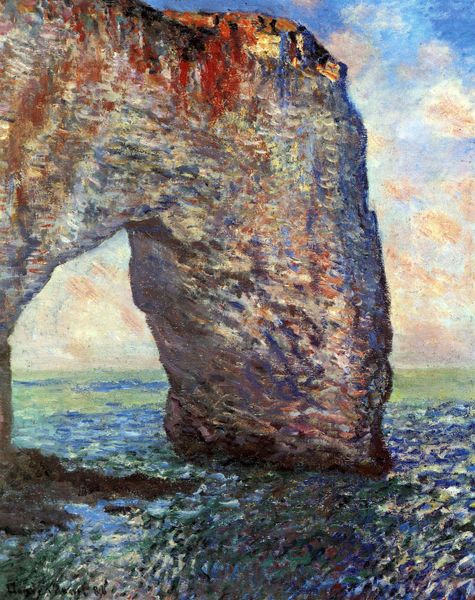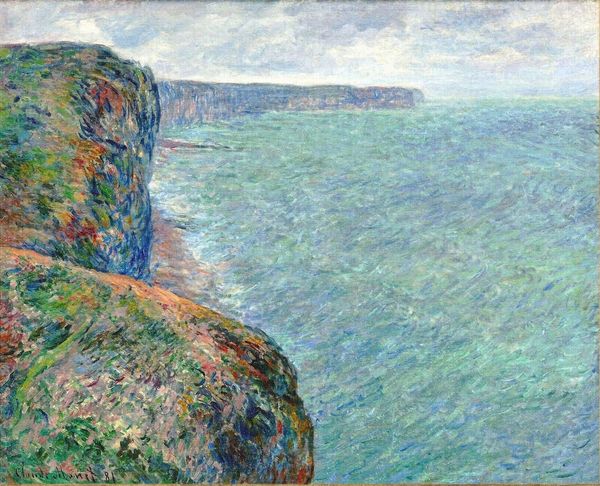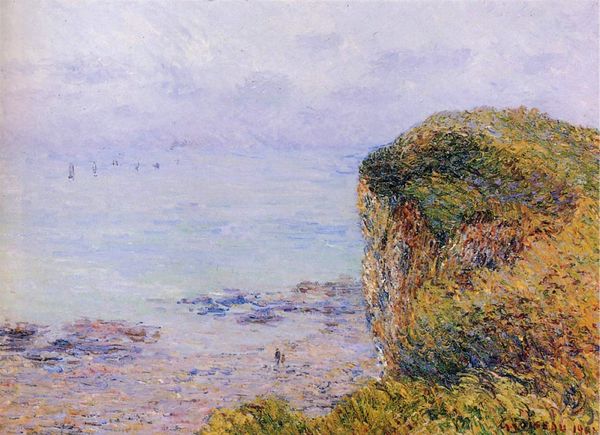
Copyright: Public domain
Editor: We’re looking at “Etretat,” painted in 1902 by Gustave Loiseau. It’s an oil painting depicting the famous cliffs of Étretat in France, all blues, greens, and pinks. The water is so still. What strikes me is how solid everything feels, despite the impressionistic brushstrokes. What do you see in this piece? Curator: It’s interesting you say “solid,” because I initially felt a dreamlike quality, the way memories sometimes take on a weight that defies logic. It is clearly Étretat – those cliffs are iconic – but the way Loiseau handles the light, almost flattening the perspective, invites us to enter a realm of feeling more than strict representation. Does it remind you, perhaps, of a postcard? Editor: A postcard! That’s so interesting! In a way, yes. It's familiar. Is that familiarity Loiseau's intention? Curator: Perhaps. Or maybe he’s exploring how a place becomes synonymous with an emotion. Think of it: those cliffs have witnessed so much. History, human drama, the endless rhythm of the sea. Loiseau, painting *en plein air*, wasn't just capturing a view; he was wrestling with time itself. It feels less about accurately depicting and more about remembering. Don't you find something quite sad about that, yet quite beautiful at the same time? Editor: I see what you mean. The soft edges and blended colors now give it a nostalgic feel. Thanks to your insights, I feel I'm seeing the painting with new eyes, connecting with that sense of memory and time. Curator: And I'm glad you brought up the "solid" feeling – sometimes, our most vivid memories *do* feel utterly real, tangible. Art's magic trick, isn’t it? To hold the ephemeral in solid form.
Comments
No comments
Be the first to comment and join the conversation on the ultimate creative platform.
